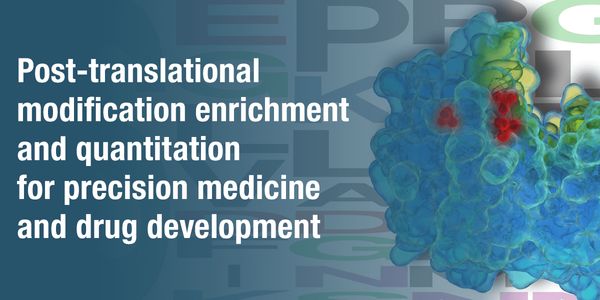Cancer Molecular Biology
Molecular biology plays an important role in the diagnosis and treatment of cancer. On a biological level, the development of cancer is characterized by the acquisition of genetic mutations which cause abnormal cell growth, eventually resulting in malignant disease. Understanding how molecular damage can cause these cancer-driving mutations can help design optimal treatment regimens
-
NOV 18, 2019 | 7:00 AMDATE: November 18, 2019TIME: 7:00am PST, 11:00am EST, 4:00pm CEWT How often do you pipette in your cell culture lab every day? Usually, we do it so often that we tend stop th...Facioscapulohumeral muscular dystrophy (FSHD), one of the most common forms of progressive muscular dystrophies and is often conventionally diagnosed by Southern blot analysis. The accurate d...Speaker: Alka Chaubey, PhD, FACMG
NOV 12, 2019 | 10:00 AM
DATE: November 12, 2019TIME: 10:00am PSTDirect measurement of copy number by droplet-based shallow sequencing of genomic DNA has the potential to provide new insights into tumor heterog...
NOV 07, 2019 | 9:00 AM
DATE: November 7, 2019 TIME: 9:00am PST, 12:00pm EST In collaboration with Hematherix and Thermo Fisher, Dr. Laurent Mosnier is investigating a new treatment for acute traumatic bl...
Since the establishment of reverse genetics techniques to manipulate the influenza virus genome, it has been possible to study viral molecular signatures responsible for virulence, and the ge...
OCT 30, 2019 | 7:00 AM
DATE: October 30, 2019TIME: 7:00am PDTJoin us for a webinar to learn how to apply single cell methods to study cancer. Dr. William Greenleaf, Associate Professor from Stanford Universit...
Metastatic castration resistant prostate cancer (mCRPC) refractory to secondary hormonal treatments such as enzalutamide or abiraterone acetate are the most lethal of prostate cancers. In thi...
Speaker:
Tian Zhang, MD, MHS
Tumor mutational burden (TMB) is an emerging biomarker that correlates with response to immunotherapeutic agents, such as checkpoint inhibitors. Recent studies indicate that a high mutation l...
Speaker:
Ravindra Kolhe, MD, PhD
Accumulation of structural variations (SVs) across the genome is a known trigger factor for oncogenesis. Structural mutations have been clearly implicated in a number of cancers, most notably...
Speaker:
Sven Bocklandt, PhD
Osteosarcoma (OS) is the most common bone tumor in pediatric and adolescent/young adult patients. Over the past three decades, significant improvements in the survival rates or therapeutic ap...
Speaker:
Troy McEachron, PhD
Presented at: Cancer Research & Oncology Week Virtual Event Series 2019
Sponsored By: NanoString Technologies
Sponsored By: NanoString Technologies
Copy-number alterations and chromosomal translocations are widespread in cancer and frequently causing oncogenic mutations that drive tumorigenesis and therapy resistance. Despite their preva...
Speaker:
Cheng-Zhong Zhang, PhD
Blockade of CTLA-4 and PD-1, members of the B7/CD28 family, have proven to be the most successful cancer immunotherapies to date. While the current therapeutic focus remains on B7/CD28 family...
Speaker:
Anthony Persen, PhD
Presented at: Cancer Research & Oncology Week Virtual Event Series 2019
Sponsored By: ACD - A Bio-Techne Brand
Sponsored By: ACD - A Bio-Techne Brand
























